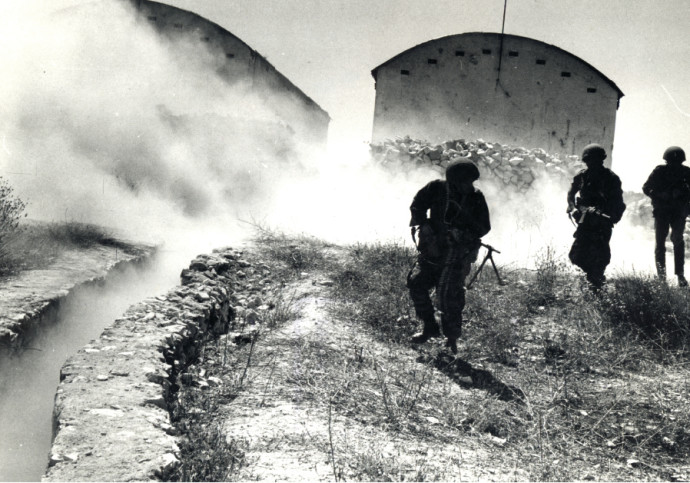In Ammunition Hill, a special exhibition opened this week by Yoram Zamush, commander of the first paratrooper company of the 55th Brigade that arrived at the Western Wall during the Six-Day War, recounting Zamosh's memories of the war.
The opening event held at Ammunition Hill was attended by the fighters of Ammunition Hill, the liberators of Jerusalem, the Chief of Staff and former Defense Minister Moshe (Boogie) Ya'alon and in the presence of Communications Minister Yoaz Handel.
The exhibition included dozens of paintings depicting the events that Zamush was a part of, the ascent from the Lions' Gate, the Mount of Olives, the Temple Mount, and the Western Wall at the time of Jerusalem's liberation.
"For many years I finish my night tours on Mount Scopus near the theater where there is an observatory, one side of it to the Judean Desert and the Moab Mountains and the other side faces the whole city of Jerusalem, it is an amazing experience to see the sunrise from there, from there I painted the first painting"
Minister Yoaz Handel, who was the government representative at the event, thanked Zamos for the exhibition, noting that "those present here are longing for the Jerusalem of yesteryear, a diverse Jerusalem that everyone is ready to fight for it, right, left, religious and secular."

"Zamush, my dear friend, has done so much, for many years, for the preservation of the memory of the Six-Day War and the unification of the city of Jerusalem," Keteri Maoz, CEO of the Ammunition Hill Heritage Center at the event.
"Zamush, my dear friend, has done so much, for many years, for the preservation of the memory of the Six-Day War and the unification of the city of Jerusalem."
Keteri Maoz, CEO of the Ammunition Hill Heritage Center
"Zamosh expresses in his amazing paintings his personal experiences but also of many of his friends who fought alongside him. This exhibition is a great honor for us and for everyone who sees it," he added.
The battle for Ammunition Hill
The paratroopers had not expected to be sent to Jerusalem. Instead, the 55th Brigade, highly trained reservists who had completed their statutory military service a few years earlier, had been preparing for a parachute mission on June 5th, the opening day of the Six-Day War, in El-Arish in the Sinai Peninsula.
At the last minute, though, they were diverted to Jerusalem knowing little of what awaited them and unaware of their specific objective.
Ammunition Hill proved to be their target. Historians have robustly debated the strategic necessity of capturing the Jordanian- held position, drawing conclusions for and against the decisions taken that day.
They have questioned the motives behind the decisions made by Mordechai (Motta) Gur, the 55th Paratrooper Brigade commander, and others, as well as the chaos that ensued during the ferocious battle prompted by poor intelligence reports that meant the paratroopers encountered far more resistance than anticipated from the Jordanians (who occupied the high ground and had prepared a series of fortified trenches).
The Battle of Ammunition Hill began at 2:30 a.m. in complete darkness. The well-documented tales of the battle included a paratrooper throwing himself onto a live grenade to save his comrades, junior officers picking up the baton and leading the charge after their senior officers had fallen, and other notable incidents of valor above and beyond the call of duty.
Paul Alster contributed to this report.
